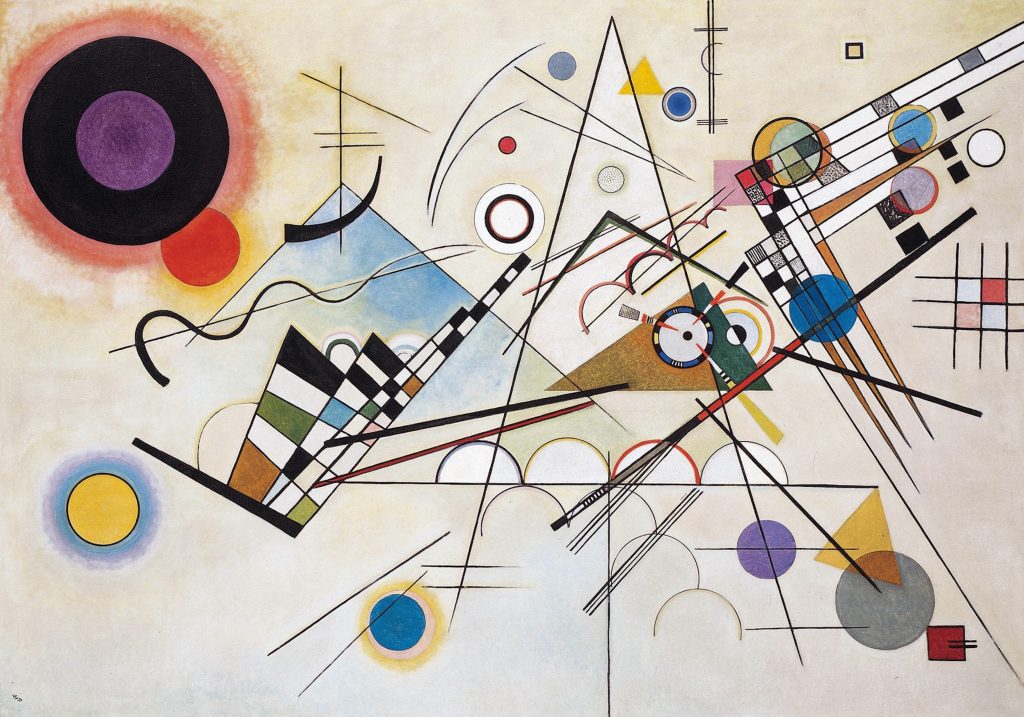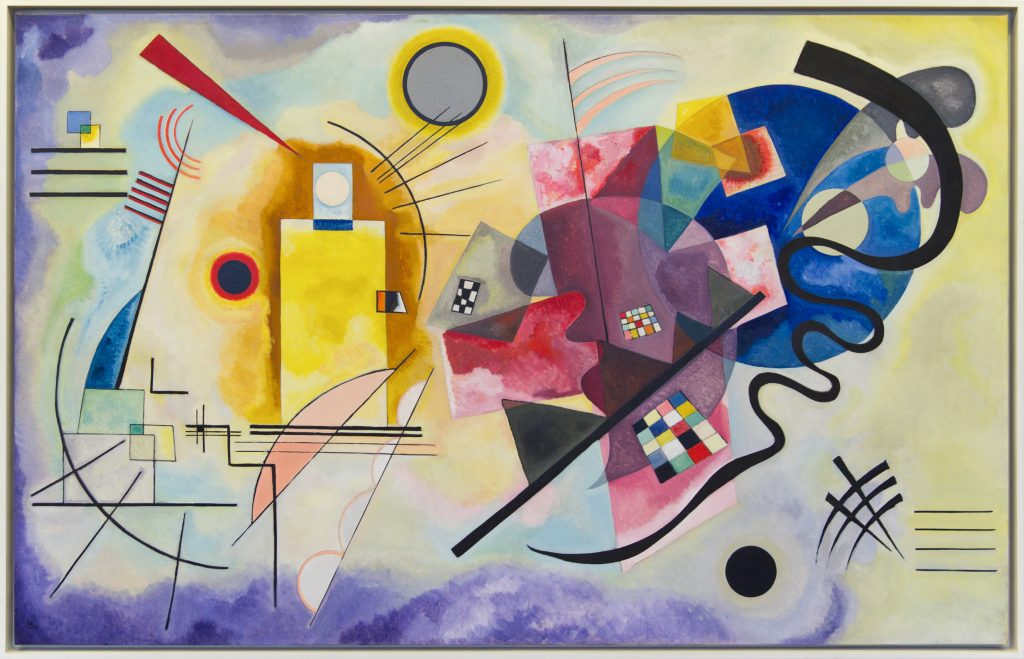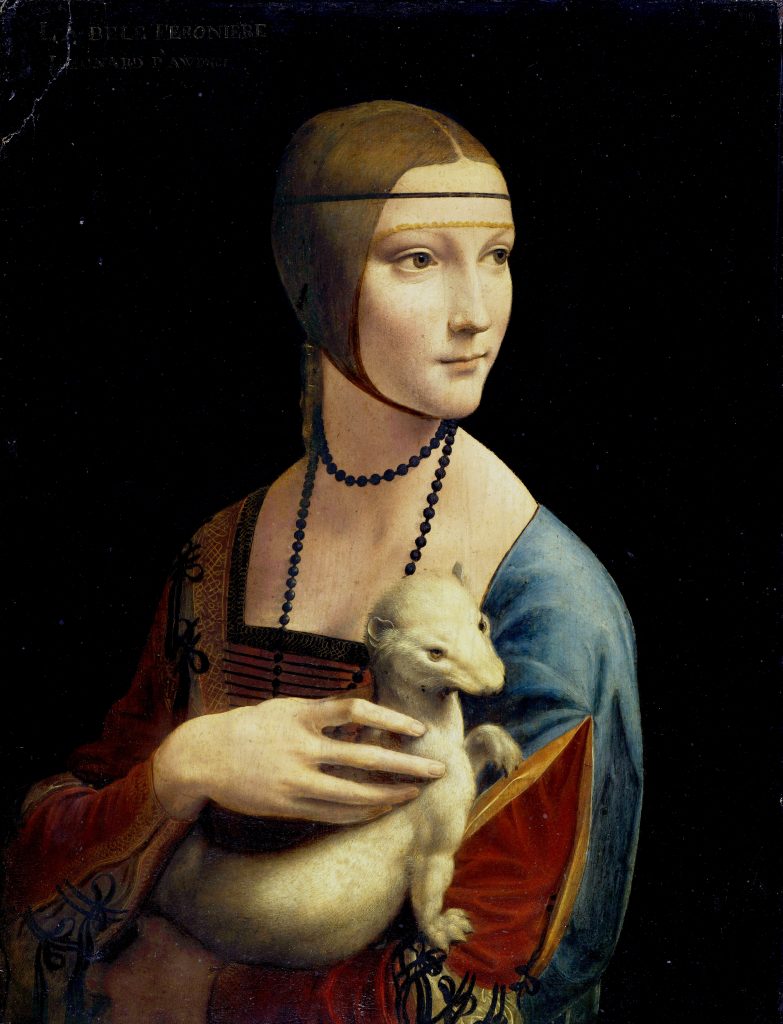Composition VIII
Wassily Kandinsky‘s “Composition VIII” is a landmark of abstract art, painted in 1923. The painting is a symphony of color and form, characterized by its complex composition and dynamic energy. The piece is a testament to Kandinsky’s belief in the power of abstract art to convey emotion and spirituality.
The painting is divided into a series of intersecting geometric shapes, which are arranged in a way that creates a sense of movement and dynamism. The shapes are carefully balanced and arranged, with a sense of order and harmony that belies the complexity of the composition. The colors are bright and bold, with a sense of energy and vitality that animates the painting.
One of the most notable aspects of “Composition VIII” is the way that it emphasizes the emotional and spiritual power of abstract art. Kandinsky believed that abstract art had the ability to convey deep emotions and spiritual truths, and that it was capable of transcending the limitations of representational art. The dynamic, expressive forms of “Composition VIII” are a testament to this belief, as they convey a sense of energy and movement that is not tied to any particular subject or object.
Another notable aspect of the painting is the way that it embodies Kandinsky’s belief in the transformative power of art. Kandinsky believed that art had the ability to inspire and elevate the human spirit, and that it could bring about a new, more harmonious world. The bold, vibrant colors of “Composition VIII” are a reflection of this belief, as they create a sense of vitality and optimism that is not tied to any particular subject or object.
The painting has been interpreted in many different ways over the years. Some see it as a reflection of Kandinsky’s belief in the power of abstract art to convey emotion and spirituality, while others see it as a reflection of the political and social upheavals of the time. Still, others see it as a commentary on the nature of reality and the role of art in shaping our understanding of the world.
In conclusion, “Composition VIII” is a masterpiece of abstract art, notable for its complex composition, bold use of color, and emotional and spiritual power. The painting is a testament to Kandinsky’s belief in the transformative power of art and its ability to elevate the human spirit. It continues to fascinate and inspire new generations of artists and art lovers to this day.




